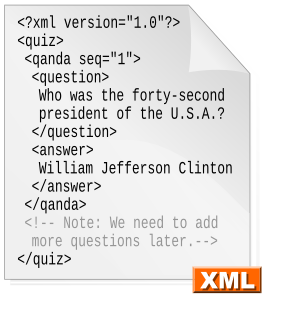This page is based on this
Wikipedia article Text is available under the
CC BY-SA 4.0 license; additional terms may apply.
Images, videos and audio are available under their respective licenses.

The Document Object Model (DOM) is a cross-platform and language-independent application programming interface that treats an HTML, XHTML, or XML document as a tree structure wherein each node is an object representing a part of the document. The DOM represents a document with a logical tree. Each branch of the tree ends in a node, and each node contains objects. DOM methods allow programmatic access to the tree; with them one can change the structure, style or content of a document. Nodes can have event handlers attached to them. Once an event is triggered, the event handlers get executed.
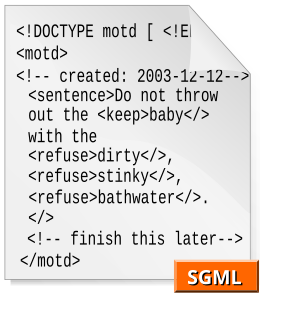
The Standard Generalized Markup Language is a standard for defining generalized markup languages for documents. ISO 8879 Annex A.1 defines generalized markup:-
Generalized markup is based on two postulates:
SOAP is a messaging protocol specification for exchanging structured information in the implementation of web services in computer networks. Its purpose is to provide extensibility, neutrality and independence. It uses XML Information Set for its message format, and relies on application layer protocols, most often Hypertext Transfer Protocol (HTTP) or Simple Mail Transfer Protocol (SMTP), for message negotiation and transmission.
XSLT is a language for transforming XML documents into other XML documents, or other formats such as HTML for web pages, plain text or XSL Formatting Objects, which may subsequently be converted to other formats, such as PDF, PostScript and PNG. XSLT 1.0 is widely supported in modern web browsers.
The Document Style Semantics and Specification Language (DSSSL) is an international standard developed to provide a stylesheets for SGML documents.
XSD, a recommendation of the World Wide Web Consortium (W3C), specifies how to formally describe the elements in an Extensible Markup Language (XML) document. It can be used by programmers to verify each piece of item content in a document. They can check if it adheres to the description of the element it is placed in.
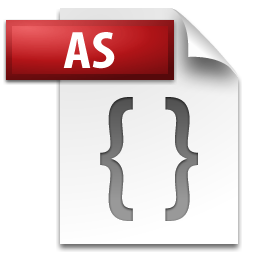
ActionScript is an object-oriented programming language originally developed by Macromedia Inc.. It is a derivation of HyperTalk, the scripting language for HyperCard. It is now a dialect of ECMAScript, though it originally arose as a sibling, both being influenced by HyperTalk.
Apache Cocoon, usually just called Cocoon, is a web application framework built around the concepts of pipeline, separation of concerns and component-based web development. The framework focuses on XML and XSLT publishing and is built using the Java programming language. The flexibility afforded by relying heavily on XML allows rapid content publishing in a variety of formats including HTML, PDF, and WML. The content management systems Apache Lenya and Daisy have been created on top of the framework. Cocoon is also commonly used as a data warehousing ETL tool or as middleware for transporting data between systems.

A node is a basic unit of a data structure, such as a linked list or tree data structure. Nodes contain data and also may link to other nodes. Links between nodes are often implemented by pointers.
XPath 2.0 is a version of the XPath language defined by the World Wide Web Consortium, W3C. It became a recommendation on 23 January 2007. As a W3C Recommendation it was superseded by XPath 3.0 on 10 April 2014.
The programming language XQuery defines FLWOR as an expression that supports iteration and binding of variables to intermediate results. FLWOR is an acronym: FOR, LET, WHERE, ORDER BY, RETURN. FLWOR is loosely analogous to SQL's SELECT-FROM-WHERE and can be used to provide join-like functionality to XML documents.
XML documents have a hierarchical structure and can conceptually be interpreted as a tree structure, called an XML tree.
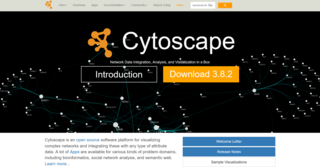
Cytoscape is an open source bioinformatics software platform for visualizing molecular interaction networks and integrating with gene expression profiles and other state data. Additional features are available as plugins. Plugins are available for network and molecular profiling analyses, new layouts, additional file format support and connection with databases and searching in large networks. Plugins may be developed using the Cytoscape open Java software architecture by anyone and plugin community development is encouraged. Cytoscape also has a JavaScript-centric sister project named Cytoscape.js that can be used to analyse and visualise graphs in JavaScript environments, like a browser.
The Internationalization Tag Set (ITS) is a set of attributes and elements designed to provide internationalization and localization support in XML documents.
XPath is a query language for selecting nodes from an XML document. In addition, XPath may be used to compute values from the content of an XML document. XPath was defined by the World Wide Web Consortium (W3C).
XQuery is a query and functional programming language that queries and transforms collections of structured and unstructured data, usually in the form of XML, text and with vendor-specific extensions for other data formats. The language is developed by the XML Query working group of the W3C. The work is closely coordinated with the development of XSLT by the XSL Working Group; the two groups share responsibility for XPath, which is a subset of XQuery.
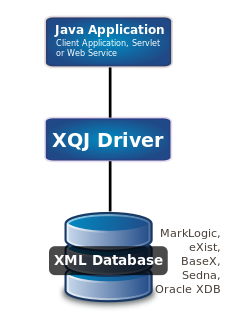
XQuery API for Java (XQJ) refers to the common Java API for the W3C XQuery 1.0 specification.

An XML transformation language is a programming language designed specifically to transform an input XML document into an output document which satisfies some specific goal.
XPath 3 is the latest version of the XML Path Language, a query language for selecting nodes in XML documents. It supersedes XPath 1.0 and XPath 2.0.
